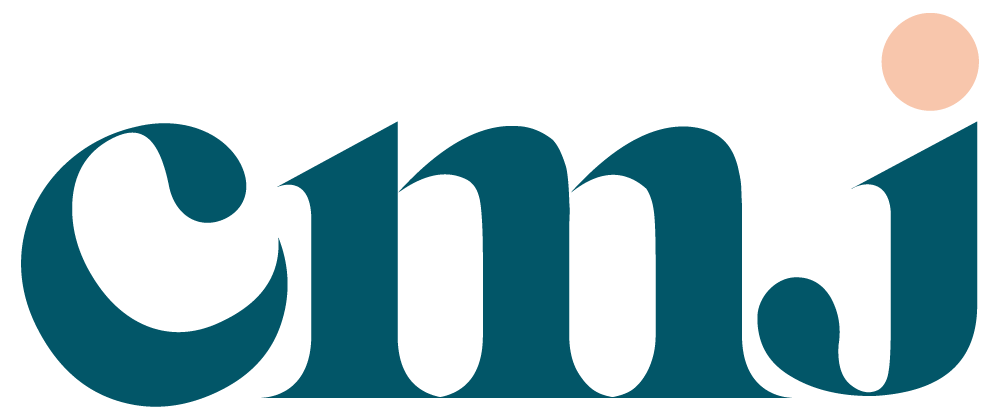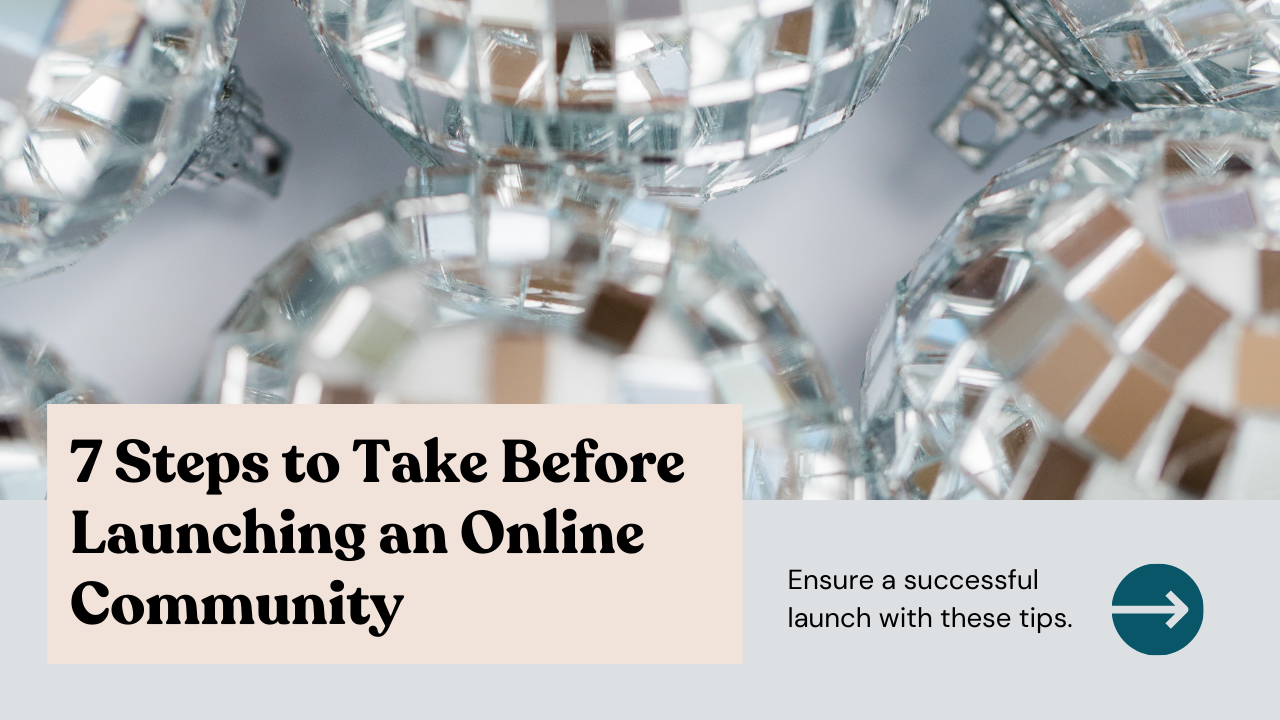7 Steps to Take Before Launching an Online Community
You may have heard you can roll out a community platform in just a few days. What you have heard is 100% true.
But the platform is just the tip of the iceberg when it comes to a community launch. The other pieces - even more important than the digital home itself - can take several weeks or months. Done correctly, however, these are the most rewarding and important parts of a community-building journey.
I’ve learned this lesson the hard way, through small failures and big disappointments in my work, and then by hand-holding clients through the process so they do not make the same mistakes.
No matter what type of organization you work for, there is a major difference between the brands that say they want to invest in community and those that succeed.
Here are some of the most common mistakes that organizations make when launching a community:
Relying on stereotypes and guesses to create your community’s value proposition (your customers’ Instagram persona is a performative expression, not who they really are)
Not getting specific enough about who you will gather and why
Belief in the importance of “engagement” but fear of doing anything that cannot be explicitly measured and optimized
Emphasis on marketing outcomes at the expense of what is best for the customer
With this guide, you’ll walk away prepped and ready to launch a community that is both valuable and exciting, that is not extractive, and that helps you sleep better at night knowing you made something the world needs.
Timeline to Prepare for a Successful Community Launch
Step 1: Create a hypothesis of the problem your community can solve.
1 Day
What real problems does your team face right now? Start with a hypothesis of the top three (ranked) problems and challenges. Begin there.
If you’re stuck, try thinking along these lines:
People love your product, but your growth has plateaued.
You want real, authentic ambassadors for your products and services, not quid pro quo paid influencers.
Customers buy a product from you every 6 months but never interact with your organization between purchases.
You want to be the first name people think about when they are considering a product or service like yours.
Remember, this is just a hypothesis. If you need to get approval on these priorities before moving ahead, give it another two weeks before you can get all the stakeholders in the same (Zoom) room to collaborate.
Step 2: Listen to potential members.
2-3 Weeks
If you’re anything like me and the teams I’ve worked with, you’ll be relieved to know you do not need to conduct months of research. Instead, start by listening to a few key people. Think about the different potential groups of people you would like to join your community. Then talk with at least 4-5 members of the group you think will most likely be served by the community. Have a genuine conversation, and get to know this person.
If you feel overwhelmed by this, it’s okay to slow down. It is far better to spend this upfront time hearing, in their own words, people’s struggles, challenges, and needs. If you skip this step, you’ll end up redoing your work after investing based on assumptions.
Step 3: Collaborate with your team.
1 Week
Now that you understand potential members, it’s time to bring their needs together with your business priorities. Here are some examples:
A cosmetics company struggling to increase lifetime customer value learns that their customers really want firsthand advice and before/after photos to show them what to expect and how to use their purchased products.
An association with a goal to increase membership by 10% this year learns that prospective members often do not join because they don’t see any benefit beyond getting a discount on your annual conference, but that they are all struggling to find mentors to take their careers to the next level.
A media company wants to increase organic reach and discovers a segment of its customer base who are superfans and would love to be involved in editorial curation in exchange for spreading the word.
Find ways that your members' needs can also serve your organization. It’s much easier than you would expect. For instance:
The cosmetics company could:
Start a peer-to-peer advice forum
Create an ambassador or affiliate program for those who already use their full line of products to teach others how to use them
Begin matching new customers’ questions with answers from staff or other customers using software like Directly
The association could:
Start a virtual mentoring program
Invite retired professionals to create resource wikis
Host a weekend conference in which the entire focus is helping young career professionals find sponsors and mentors and receive timely advice
The media company could:
Start an invite-only VIP program or ambassadorship
Convene a task force of honorary editorial volunteers
Launch a forum or subsite just for community-curated content
Ideally, you do this phase of the project in three chunks:
A big meeting with all stakeholders, facilitated by you, in which everyone creates new ideas.
A session with you and direct reports ideating and then refining.
Polishing and limiting the suggestions down to one big program or several small programs (a forum is just one example of a community investment, not the only kind!).
While this is the ideal state, it is not always realistic. Go with what works in your organization and what is most efficient.
Step 4: Choose your technology, vendors, and budgets.
1-4 Weeks
Now, the tactical work begins. You’ll need to answer these questions:
What technology do we need to run these programs?
What will it cost?
How will it work together with existing tech, like your CRM and marketing automation software?
Who will maintain it?
How will changes and updates be made, and how often?
How long does it take to implement the tools you need?
And who will you work with to implement the initial launch? Are they available?
You will spend about four weeks here, though it could be fewer if you use tools you and your team are familiar with or if you have done prior technology research. This phase could be significantly longer if you need to go through an advanced procurement process.
Step 5: Kickoff design and development.
2 Weeks
If you are working with vendors, much of the heavy technical lifting will begin to move off of your plate so you can begin to plan community programs, train new hires, and set up operations.
In addition, create a list of the ten or so folks you would like to have as beta testers (it’s a great idea to invite those you listened to earlier!)
If you are not working with outside vendors, plan at least two weeks to gather the team you need and plan the work ahead. The beta testing phase will likely be a bit more bumpy for those working with in-house teams, but the initial investment can pay off in the long-term as your team will be familiar with the tools.
Step 6: Beta test.
4-6 Weeks
Launch to a beta group first (sometimes these are the same as your Founding Members). This should be a group of trusted collaborators whom you know will be involved in the community once it launches officially. Work with them over a few weeks to roll out changes, gather insight, and give them a peek behind the curtain into how you’re setting up the community.
At this stage, you should gather extensive feedback from these beta testers and implement the changes to the technology and management processes.
Step 7: Launch.
4-6 Weeks
Once you have gathered enough feedback and insights, your focus should shift towards making significant changes. The community should evolve from a rough beta phase, where bugs, dead-ends and unimpressive content are acceptable, to a more refined community experience. This includes implementing at least a basic onboarding and welcoming process.
This process typically takes a few months from ideation to launch. While the platform can be launched in a few hours, the preparation work is crucial for community success.

